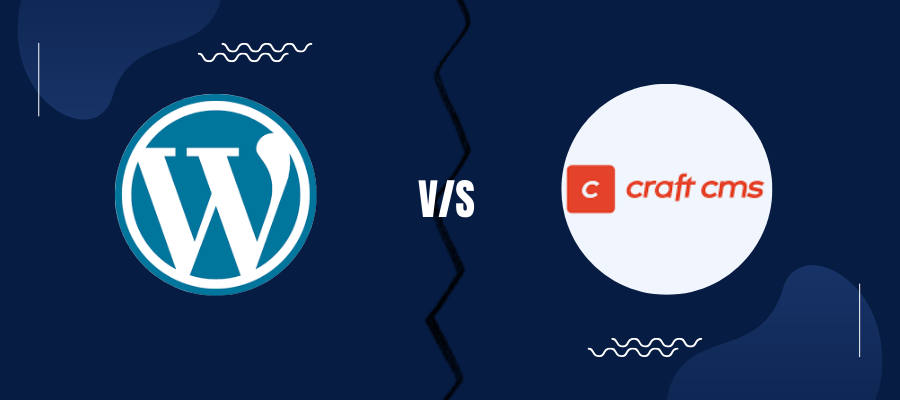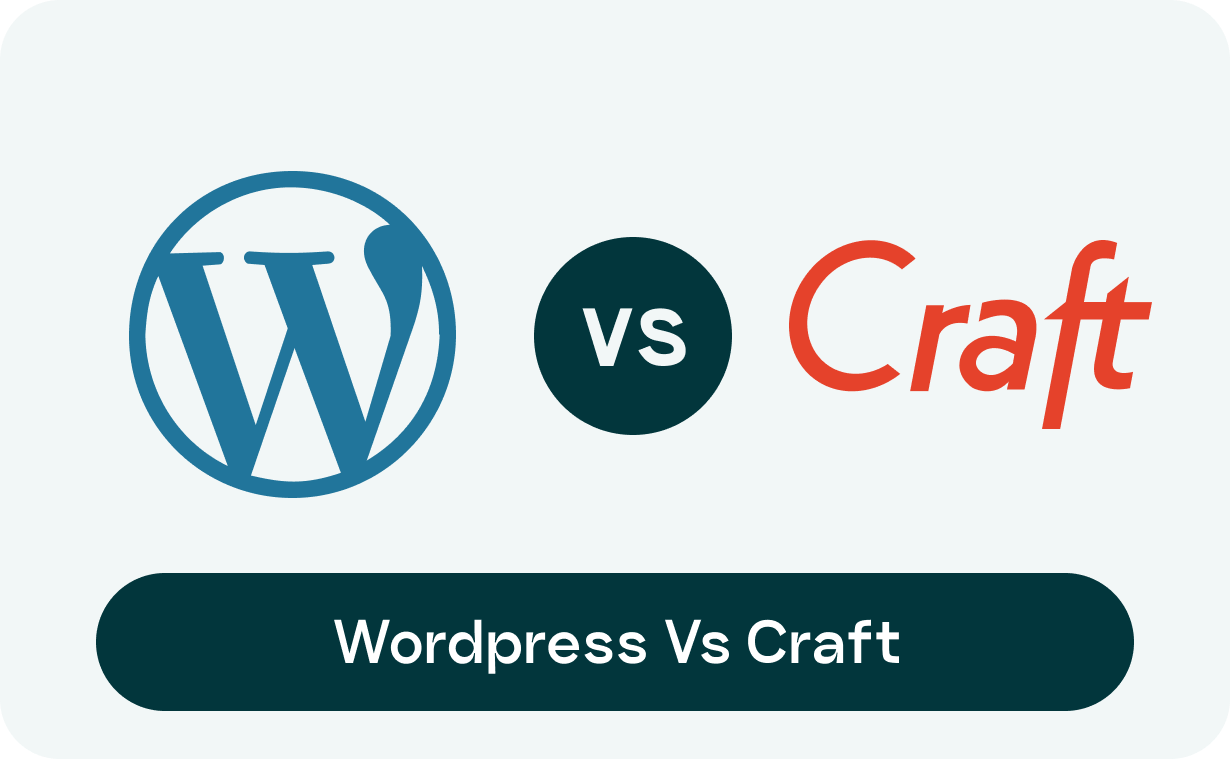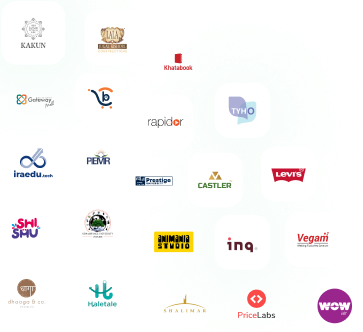Table Of Content
- WordPress vs Craft CMS: A Comprehensive Comparison
- Introduction to WordPress Vs Craft CMS
- WordPress
- Craft CMS
- Ease of Use
- Customization and Flexibility
- Design and Templates
- Plugins and Extensions
- SEO Capabilities
- Security
- Support and Community
- Performance and Speed
- E-commerce Features
- Multilingual Support
- Pricing and Costs
- Conclusion
WordPress vs Craft CMS: A Comprehensive Comparison
In the world of content management systems (CMS), WordPress has long been the dominant player, but Craft CMS has steadily gained traction as a powerful alternative for developers and businesses seeking more control and flexibility. As we move into 2025, both platforms have evolved significantly, offering unique features and capabilities that cater to different types of users.Whether you're a developer, a business owner, or a content creator, understanding the differences between WordPress vs Craft CMS is essential to choosing the right platform for your website. In this blog, we’ll explore the latest features, usability, customization options, and more for both platforms in 2025.
Introduction to WordPress Vs Craft CMS
WordPress
WordPress continues to dominate the CMS market in 2025, powering over 45% of all websites globally. Its open-source nature, combined with a massive ecosystem of themes, plugins, and developers, makes it the go-to choice for businesses, bloggers, and developers alike. WordPress has evolved significantly, with advancements in its block editor (Gutenberg), improved AI-driven tools for content creation, and enhanced performance optimizations.WordPress remains highly customizable, making it suitable for everything from simple blogs to complex enterprise websites. Its community-driven development ensures it stays at the forefront of web technology.Craft CMS
Craft CMS has established itself as a premium CMS for developers and businesses that require a high level of customization and control. In 2025, Craft CMS has introduced new features such as enhanced content modeling, improved multi-site management, and advanced localization tools. Known for its flexibility and developer-friendly approach, Craft CMS is ideal for creating bespoke websites and applications.Craft CMS is particularly popular among agencies and businesses that need to manage complex content structures and deliver tailored user experiences. While it has a steeper learning curve compared to WordPress, its flexibility and scalability make it a strong contender for advanced users.Ease of Use
WordPress
WordPress has made significant strides in improving its user experience by 2025. The Gutenberg block editor has become even more intuitive, with AI-assisted content creation tools that suggest layouts, images, and text based on your input. However, WordPress still requires a learning curve, especially for beginners who need to manage hosting, plugins, and updates.For non-technical users, managed WordPress hosting services like WP Engine and Kinsta have simplified the process, offering one-click installations and automated updates. Page builders like Elementor and Divi have also become more advanced, allowing users to create complex designs without coding.Craft CMS
Craft CMS is designed with developers in mind, and its user interface reflects this focus. In 2025, Craft CMS has improved its control panel to make it more user-friendly for content editors, but it still requires technical expertise to set up and customize. The platform offers a clean and intuitive interface for managing content, but the initial setup and configuration can be challenging for non-developers.For developers, Craft CMS’s flexibility and control are unparalleled, but for beginners or those without technical skills, WordPress is the more accessible option.Customization and Flexibility
WordPress
WordPress is renowned for its flexibility and customization options. With thousands of free and premium themes, along with over 70,000 plugins, you can build virtually any type of website. In 2025, WordPress has introduced more advanced customization options, including AI-powered theme generators and dynamic content blocks.WordPress’s open-source nature means that developers can create custom themes and plugins tailored to specific needs. This makes it an excellent choice for businesses and individuals who require a highly customized website.Craft CMS
Craft CMS is built for customization. In 2025, the platform has introduced enhanced content modeling tools, allowing developers to create custom fields, layouts, and workflows tailored to specific needs. Craft CMS’s flexibility makes it a strong contender for complex websites that require advanced content structures and user management.However, Craft CMS’s customization options require technical expertise, making it less accessible for beginners. For developers and businesses that need a highly tailored solution, Craft CMS is the better choice.Design and Templates
WordPress
WordPress offers an extensive library of themes, both free and premium, catering to every industry and niche. In 2025, WordPress themes have become more dynamic, with AI-driven design tools that adapt to your content and branding. Many themes now come with built-in integrations for popular plugins, making it easier to add functionality.The downside is that not all WordPress themes are created equal. Some may require additional customization to achieve the desired look, which can be challenging for beginners.Craft CMS
Craft CMS does not come with a library of pre-designed themes like WordPress. Instead, it provides developers with the tools to create custom designs from scratch. In 2025, Craft CMS has introduced new design tools and integrations with popular front-end frameworks like Tailwind CSS and Vue.js, making it easier to build bespoke designs.For developers, Craft CMS’s approach to design offers unparalleled flexibility, but it requires more time and expertise compared to WordPress.Plugins and Extensions
WordPress
WordPress’s plugin ecosystem is one of its biggest strengths. In 2025, the platform boasts over 80,000 plugins, offering everything from SEO tools to e-commerce solutions. Popular plugins like Yoast SEO, WooCommerce, and Elementor have become even more powerful, with AI-driven features and improved performance.The downside is that managing plugins can be overwhelming for beginners. Poorly coded plugins can also slow down your website or create security vulnerabilities.Craft CMS
Craft CMS offers a more limited range of extensions compared to WordPress. In 2025, the platform has expanded its plugin marketplace, but it still lags behind WordPress in terms of functionality. Craft CMS’s built-in features are robust, but they may not be sufficient for users who need advanced functionality.For example, while Craft CMS offers e-commerce capabilities through plugins like Craft Commerce, they are not as extensive as WooCommerce’s. Similarly, Craft CMS’s SEO tools are good but not as advanced as WordPress’s.SEO Capabilities
WordPress
WordPress remains one of the most SEO-friendly platforms in 2025. With plugins like Yoast SEO and Rank Math, you can optimize every aspect of your website, from meta tags to XML sitemaps. WordPress’s clean code and fast-loading themes also contribute to better search engine rankings.In 2025, WordPress will introduce AI-driven SEO tools that analyze your content and provide real-time suggestions for improvement. This makes it easier than ever to optimize your website for search engines.Craft CMS
Craft CMS has made significant improvements to its SEO capabilities by 2025. The platform now offers built-in SEO tools, including customizable meta tags, clean URLs, and automatic sitemaps. However, Craft CMS’s SEO features are still not as advanced as WordPress’s.For users who prioritize simplicity, Craft CMS’s SEO tools are sufficient. However, if you need advanced SEO capabilities, WordPress is the better choice.Security
WordPress
WordPress’s security has improved significantly by 2025, thanks to advancements in core security features and plugins like Wordfence and iThemes Security. However, because WordPress is open-source, it remains a target for hackers. Regular updates and security best practices are essential to keep your website safe.Craft CMS
Craft CMS is known for its strong security features. In 2025, the platform has introduced advanced security measures, including two-factor authentication, password encryption, and regular security audits. Craft CMS’s focus on security makes it a reliable choice for businesses and developers.Support and Community
WordPress
WordPress’s community is one of its greatest assets. In 2025, the platform boasts an even larger and more active community, with countless forums, tutorials, and resources available. However, because WordPress is open-source, official support is limited. Users often rely on third-party developers or hosting providers for assistance.Craft CMS
Craft CMS offers professional support through its paid plans, including email support and access to a dedicated support team. In 2025, the platform has expanded its support resources, including an extensive knowledge base and community forums. For users who value reliable support, Craft CMS is the better choice.Performance and Speed
WordPress
WordPress’s performance has improved significantly by 2025, thanks to advancements in caching plugins, CDN integrations, and optimized hosting solutions. However, performance can vary depending on the quality of your hosting and plugins.Craft CMS
Craft CMS is known for its performance and speed. In 2025, the platform has introduced performance optimizations, including built-in caching and Gzip compression. Craft CMS’s lightweight core ensures fast loading times, making it a strong choice for performance-conscious users.E-commerce Features
WordPress
WordPress, with WooCommerce, remains a powerhouse for e-commerce in 2025. The platform offers advanced features, including product variations, subscriptions, and integrations with payment gateways. WooCommerce’s flexibility makes it suitable for businesses of all sizes.Craft CMS
Craft CMS offers e-commerce capabilities through plugins like Craft Commerce. In 2025, Craft Commerce has introduced new features, including subscription management and advanced product variants. However, Craft CMS’s e-commerce features are still not as extensive as WooCommerce’s.Multilingual Support
WordPress
WordPress offers excellent multilingual support through plugins like WPML and Polylang. In 2025, these plugins have become even more advanced, with AI-driven translation tools.Craft CMS
Craft CMS has introduced built-in multilingual support by 2025, making it easier to create websites in multiple languages. However, it is not as flexible as WordPress’s solutions.Pricing and Costs
WordPress
WordPress itself is free, but costs can add up for hosting, premium themes, and plugins. In 2025, managed WordPress hosting plans start at around $10/month, while advanced websites can cost significantly more.Craft CMS
Craft CMS is a premium CMS, with pricing starting at $299/year for the basic plan in 2025. Additional costs may include hosting, plugins, and custom development. While more expensive than WordPress, Craft CMS’s flexibility and scalability justify the investment for many businesses.Conclusion
In 2025, both WordPress vs Craft CMS will remain strong contenders in the CMS space. WordPress is the better choice for users who need flexibility, advanced functionality, and a large ecosystem of plugins and themes. Craft CMS, on the other hand, is ideal for developers and businesses that require a high level of customization and control.Ultimately, the choice between WordPress vs Craft CMS depends on your specific needs and technical expertise. If you’re looking for a powerful, customizable platform with a large community, WordPress is the way to go. If you need a bespoke solution with unparalleled flexibility, Craft CMS is the better option.The world’s First zero commission platform
Hire tech partners effortlessly
 If you're a non-tech founder looking for an agency or a tech founder looking for engineers.
If you're a non-tech founder looking for an agency or a tech founder looking for engineers. You can get your 5 best matches from 2800 in 5 mins, with 1000 data points tracked.
You can get your 5 best matches from 2800 in 5 mins, with 1000 data points tracked. Connect directly with no credit card needed!
Connect directly with no credit card needed!
You’re just a click away from the best talent.

